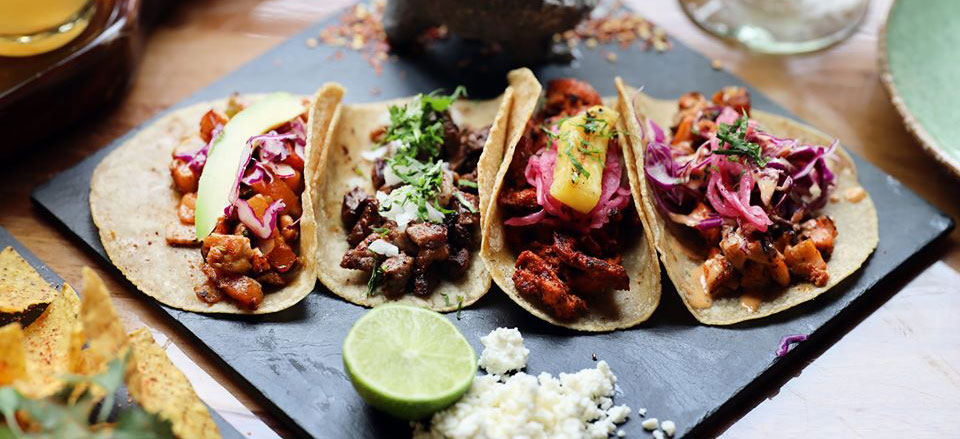A Culinary Tapestry: The Diversity of Mexican Cuisine
Mexican food is a vibrant tapestry woven from a diverse array of ingredients, flavors, and culinary traditions that reflect the country’s rich cultural heritage and regional diversity. From the spicy and savory dishes of the Yucatán Peninsula to the hearty and flavorful cuisine of central Mexico, Mexican food offers a feast for the senses that captivates and delights food enthusiasts around the world.

1. Regional Varieties
Mexican cuisine is as diverse as the country itself, with each region boasting its own unique culinary traditions and specialties. From the seafood-rich dishes of the coastal regions to the hearty stews and soups of the mountainous interior, the cuisine of Mexico reflects the cultural influences and natural resources of each distinct region.
2. Influences from Indigenous and Colonial Cultures
The roots of Mexican cuisine can be traced back to indigenous cultures such as the Aztecs, Mayans, and Zapotecs, who cultivated staples like corn, beans, and chili peppers and developed sophisticated cooking techniques like nixtamalization and stone grinding. With the arrival of Spanish conquistadors in the 16th century, European ingredients like wheat, rice, and dairy products were introduced, leading to the fusion of indigenous and colonial culinary traditions that characterize modern Mexican cuisine.
3. Global Fusion and Modern Innovations
In recent years, Mexican cuisine has undergone a renaissance, with chefs and food enthusiasts embracing both traditional techniques and modern innovations to create exciting and innovative dishes that push the boundaries of flavor and creativity. From upscale restaurants serving contemporary Mexican cuisine to food trucks and pop-up markets offering inventive street food creations, the culinary landscape of Mexico continues to evolve and captivate diners around the world.
Flavors and Ingredients: A Fiesta for the Palate
At the heart of Mexican cuisine are the bold flavors and vibrant ingredients that define its distinctive taste profile. From the earthy richness of mole sauce to the tangy brightness of fresh salsa, Mexican food is a celebration of flavor and texture that tantalizes the taste buds and leaves a lasting impression on those who indulge in its delights.
1. Chili Peppers
Chili peppers are a cornerstone of Mexican cuisine, adding heat, depth, and complexity to dishes ranging from soups and stews to sauces and salsas. From the smoky intensity of chipotle peppers to the fiery kick of habaneros, chili peppers come in a variety of shapes, sizes, and heat levels that cater to every palate and preference.
2. Corn and Maize
Corn, or maize, is a staple ingredient in Mexican cuisine, used to make tortillas, tamales, and a variety of other traditional dishes. Whether enjoyed fresh, dried, or ground into masa dough, corn plays a central role in the culinary traditions of Mexico and serves as the foundation for many beloved dishes.
3. Fresh Herbs and Spices
Fresh herbs and spices are essential for adding depth and complexity to Mexican dishes, with ingredients like cilantro, epazote, and Mexican oregano lending their distinctive flavors and aromas to soups, sauces, and marinades. From the earthy bitterness of cumin to the floral notes of Mexican cinnamon, the herbs and spices of Mexico add a layer of complexity and nuance to every dish they touch.
Iconic Dishes and Delicacies
Mexican cuisine is home to a wealth of iconic dishes and delicacies that have captured the hearts and palates of food enthusiasts around the world. From street food favorites like tacos and tamales to festive specialties like mole poblano and pozole, Mexican cuisine offers a treasure trove of culinary delights waiting to be explored and savored.
1. Tacos
Tacos are perhaps the most iconic and beloved dish in Mexican cuisine, featuring a variety of fillings ranging from grilled meats and seafood to vegetables and cheese, all wrapped in soft corn or flour tortillas and topped with fresh salsa, onions, and cilantro. Whether enjoyed from a street vendor or a gourmet taqueria, tacos are a delicious and versatile expression of Mexican culinary tradition.
2. Mole Poblano
Mole poblano is a rich and complex sauce made from a blend of chili peppers, chocolate, spices, and other ingredients, simmered together to create a velvety sauce that is both savory and sweet. Traditionally served over chicken or turkey, mole poblano is a festive dish often enjoyed during special occasions and celebrations throughout Mexico.
3. Pozole
Pozole is a hearty and flavorful soup made from hominy corn, meat (typically pork or chicken), and a richly seasoned broth flavored with chili peppers, garlic, and other spices. Garnished with shredded cabbage, radishes, lime, and fresh herbs, pozole is a comforting and satisfying dish that is enjoyed year-round, but especially during the holiday season and other festive occasions.
Conclusion: A Culinary Journey Through Mexico
In conclusion, Mexican cuisine is a vibrant and diverse culinary tradition that celebrates the flavors, ingredients, and cultural heritage of this dynamic and multifaceted country. From the ancient traditions of indigenous cultures to the global fusion and modern innovations of contemporary chefs, Mexican food continues to captivate and inspire food enthusiasts around the world with its bold flavors, vibrant colors, and rich textures. Whether savoring street tacos in Mexico City or exploring regional specialties in Oaxaca or Puebla, a culinary journey through Mexico is sure to delight the senses and leave a lasting impression on anyone fortunate enough to experience its gastronomic treasures.